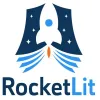Take a look inside 8 images
RocketLit
Pros: With hints and guidance at just the right places, getting started is a breeze for teachers.
Cons: The catalog of articles is a bit narrow, assessments are only multiple choice, and high school utility is probably limited.
Bottom Line: If teachers find topics that fit their curriculum, this easy-to-use collection works best in elementary and middle school classrooms.
How Can I Teach with This Tool?
Use RocketLit to teach history and science topics with articles specifically calibrated to each student's reading level. Step-by-step guidance and video tutorials help teachers jump right in to browsing articles and creating assignments. When students sign in for the first time, they complete an assessment to place their reading level, but teachers can also override that placement. Teachers can view usage data and scores on multiple choice quizzes to get a general sense of how students are doing. However, they'll likely want to scaffold through additional activities and assessments. For instance, students can use annotation tools to mark new vocabulary words or take notes on concepts throughout the article. Teachers can have students investigate the quiz questions by highlighting where they can find the answer in the text, look up new words, or create presentations demonstrating what they've learned. Though the reading levels stretch up to 12th grade, RocketLit is probably best for elementary and middle school, as the basic writing style and topics are static. It could be useful for ELLs of any grade level depending on their readiness.

















